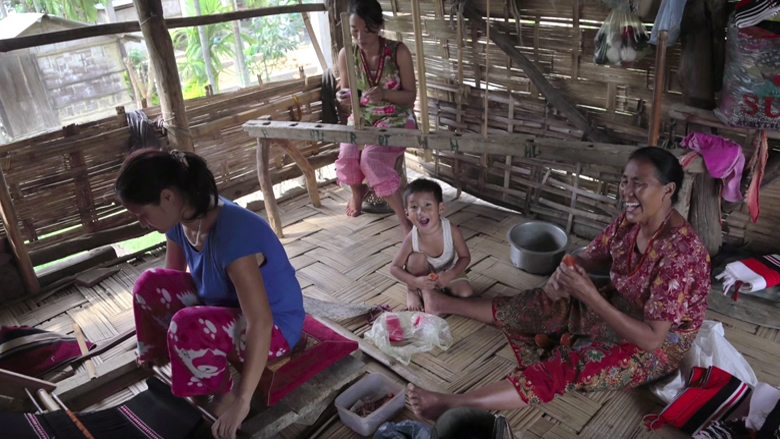Results
International Development Association (IDA) support to India’s development agenda has contributed to improving outcomes in health, education, rural development, and increasingly to disaster risk management. Some results are highlighted below:
Education: Between 2001 and 2009, India’s Education for All Program enrolled some 20 million out-of-school children, especially girls and children from socially disadvantaged families. By 2009, the number of out-of-school children had fallen to about 8.1 million. Over 98% of India’s children now have access to a primary school within 1 kilometer of their home. The focus is now on improving the quality of learning, retaining children in school, and ensuring that more children are able to access and complete secondary education.
IDA support for vocational training programs in select institutions has helped more graduates to find jobs, with their numbers rising from just 32% in 2006 to over 60% in 2011. In just the past three years, rural livelihoods projects have trained 350,000 youth, and 250,000 of them have been placed in jobs. Empowering the large numbers of India’s youth, especially in rural areas, with skills that are better matched with the demands of the labor market—whether informal or formal—will help them find jobs in the growing towns and cities where better-paid work is more readily available.
Rural livelihoods: Rural livelihoods programs have mobilized more than 30 million poor households in 90,000 villages into 1.2 million self-help groups (SHGs)—up from 8 million in 2009. Ninety-five percent of SHG participants are women. In Andhra Pradesh alone, 10 million SHG women have seen their incomes rise by 115%. Members’ savings exceeded $1.1 billion (2011) and access to credit rose by 200% to touch $5.8 billion (2000 -09). Local-level value added activities carried out by these groups and the direct market linkages provided by them have resulted in 30-40% higher prices for SHG products, tilting the terms of the trade in favor of the poor in India.
Rural water supply and sanitation: Over past two decades, IDA projects have contributed over $1.4 billion in financing for rural water supply and sanitation. About 24 million people in over 15,000 villages—with populations ranging from 150 to 15,000—have benefited from these programs. In addition, some 17 million rural people have benefitted from improved sanitation. Many projects have helped promote women’s participation in meaningful discussions around changing age-old sanitation behaviors, as well as in decision making about the use and maintenance of water and sanitation infrastructure.
Health: India has the largest burden of tuberculosis (TB) in the world. There are an estimated 2.2 million new TB cases in India every year, accounting for a quarter of the global burden. Between 1998 and 2012, two IDA credits totaling $279 million provided significant support to scale-up effective diagnosis and treatment under the national TB control program. During that period, over 15 million people with TB were diagnosed and treated by the program, saving an estimated 2.6 million lives. To date, the IDA-supported National AIDS program has reached about 81% of female sex workers (FSW), 66% of men having sex with men (MSM) and 71% of injecting drug users (IDU), with targeted interventions. However, continued attention is needed to secure these gains.
IDA support for health projects has helped pregnant women to reach medical facilities in time for delivery; in Tamil Nadu, 99.5% of deliveries now take place in medical institutions. However, despite increasing rates of decline, maternal and child mortality rates remain on par with rates in much poorer countries. And while India has recorded impressive economic growth in the past decade and malnutrition rates have declined, stunting rates remain significantly higher than those in comparator countries such as the BRICS nations (Brazil, Russia, India, China, and South Africa).
Disaster management: Support to the National Cyclone Risk Mitigation Project (Phase I) has funded the building of 420 cyclone shelters in Andhra Pradesh and the low-income state of Odisha, and handed them over to communities. Given each shelter’s capacity of accommodating 2,000 people, half a million people can now be kept safe during cyclones and other adverse weather conditions. In addition, a total of 740 kilometers of roads has been completed in these states, together with seven saline embankments and 20 bridges in the state of Andhra Pradesh.
Rural Roads: From September 2004, IDA support of some US$2 billion is helping India’s National Rural Roads Program to improve connectivity, especially in the economically weaker regions and hill states. Some 24,200 km of all-weather roads have benefitted rural people in the states of Himachal Pradesh, Jharkhand, Meghalaya, Punjab, Rajasthan, Uttarakhand and Uttar Pradesh. However, much more remains to be done as one-third of the rural population still lacks access to an all-weather road.
Agriculture and watershed development: Over the past decade or so, IDA support has helped farmers in the rain-fed regions of Karnataka, Himachal Pradesh and Uttarakhand to implement soil and water conservation measures and raise agricultural productivity. Lessons learnt have helped shape the Government of India’s Common Watershed Guidelines and the design of national watershed programs.
Since 1993, two Sodic Lands Reclamation Projects in Uttar Pradesh have brought more than 260,000 hectares of barren or unproductive lands under cultivation. Over 425,000 poor families have benefitted from a three to six fold increase in crop yields. Around 15,000 SHGs have helped women pool savings and connect to the formal banking network. In several villages, these SHGs now manage the mid-day meal provided in local state schools under a government program. A $197 million World Bank credit is now supporting the third phase of the project that aims to reclaim another 130,000 hectares of predominantly barren and low productivity sodic lands in about 25 districts of the state.


